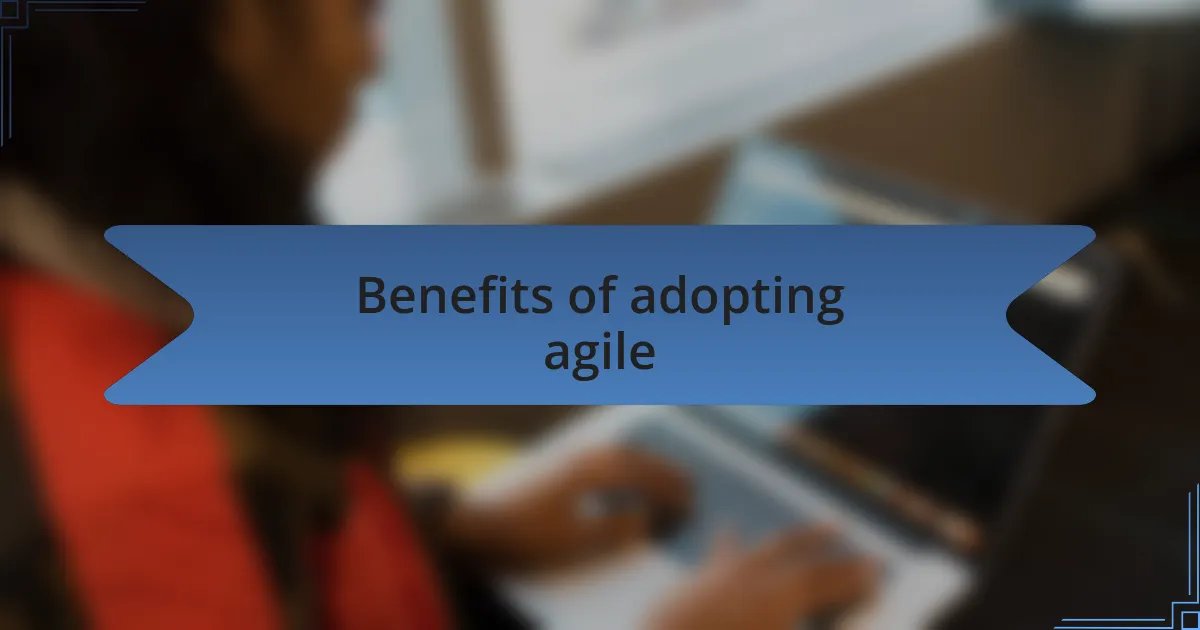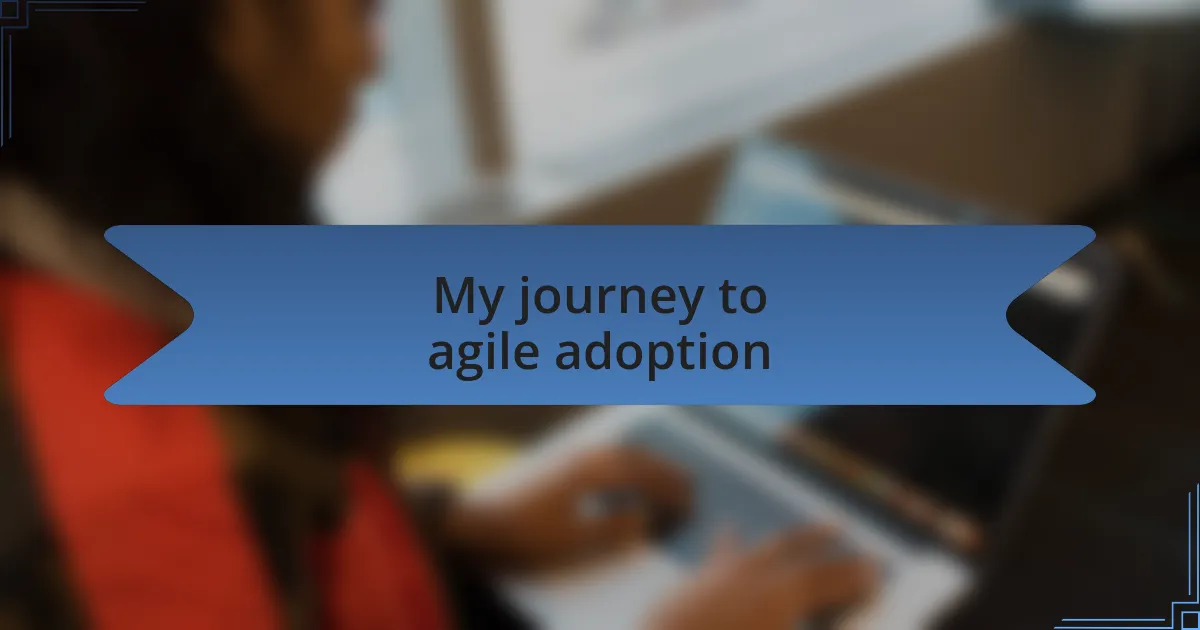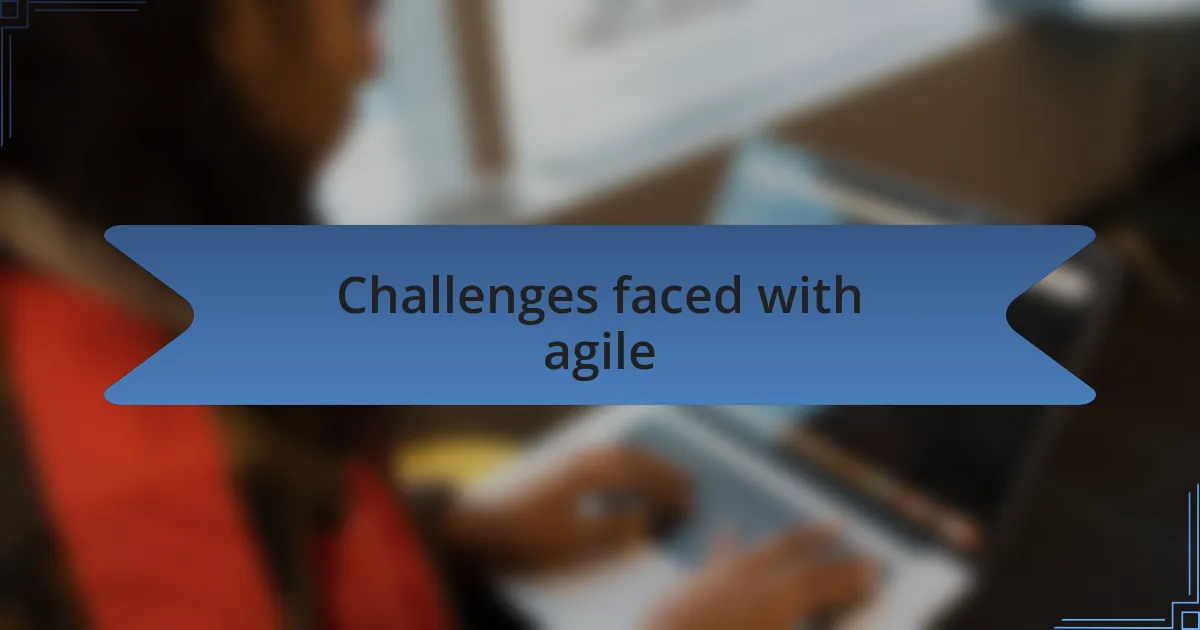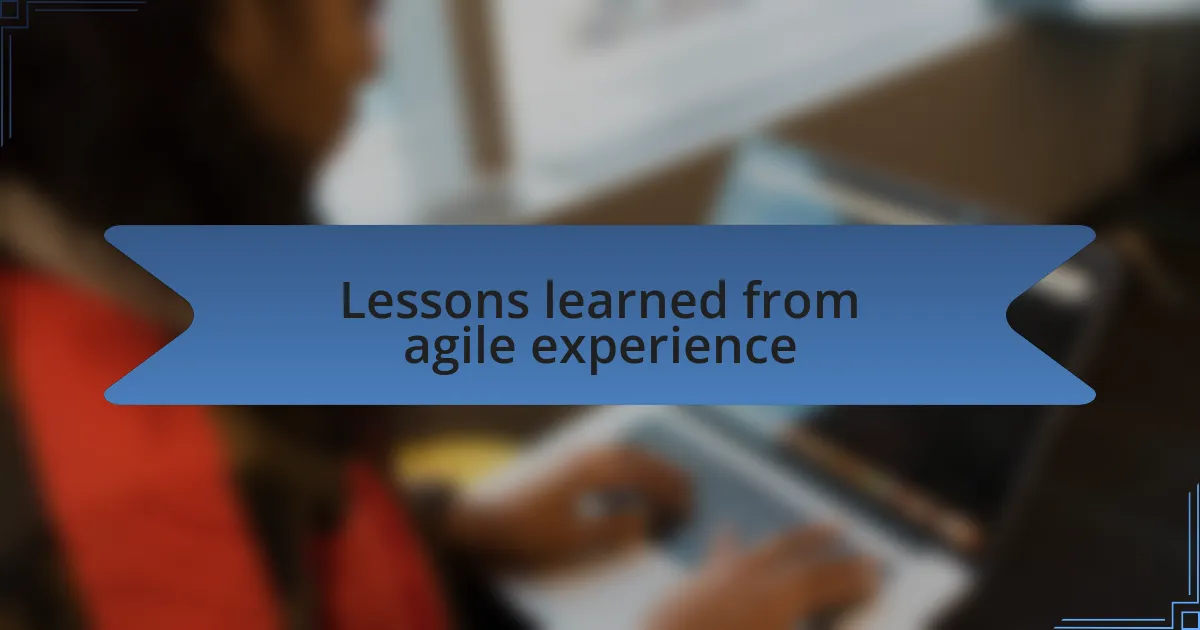Key takeaways:
- Agile methodologies emphasize flexibility, collaboration, and incremental progress, leading to enhanced productivity and user-focused development.
- Tools like Jira, Trello, and Slack facilitate agile implementation by improving task management and communication among team members.
- Challenges during the transition to agile include resistance to change and maintaining clear communication, which highlight the need for a supportive team culture.
- Key lessons from agile experiences include the empowerment of team members, the importance of regular retrospectives for continuous improvement, and adaptability to change.

Understanding agile methodologies
Agile methodologies are designed to be flexible and iterative, allowing teams to adapt to changes quickly. I remember when I first encountered Agile principles; it felt like a breath of fresh air compared to the rigid structures I was used to. Have you ever felt stifled by a strict process? Agile empowered me to pivot and refine ideas based on real user feedback, fostering a more dynamic development environment.
One of the core tenets of Agile is collaboration. In my experience, working closely with cross-functional teams became a game changer. The daily stand-ups transformed into a space where ideas flowed, and challenges were addressed in real-time, enabling us to tackle obstacles more effectively. Have you experienced the magic of team synergy during a sprint?
Understanding Agile also means appreciating the importance of incremental progress. Reflecting on my past projects, I was amazed at the value of releasing small batches of features. This approach not only kept stakeholders engaged but also provided us with essential insights to improve future iterations. It’s incredible how a mindset shift can lead to meaningful advancements in your project outcomes.

Benefits of adopting agile
Adopting agile methodologies brought unexpected efficiency to my workflow that I hadn’t realized I was missing. I recall a project where we implemented two-week sprints, and it felt like unlocking a new level of productivity; suddenly, the team was focused and energized, eager to meet each sprint goal. Isn’t it amazing how setting short-term objectives can create a sense of urgency and excitement in a team?
Moreover, embracing agile fostered an environment of continuous improvement. I remember after a few iterations, we held a retrospective to discuss what went well and what could be improved. The candid feedback from team members not only fostered trust but also paved the way for innovative solutions to emerge. Have you ever experienced that enlightening moment when team feedback sparks a breakthrough idea?
The focus on customer feedback in agile practices transformed my approach to development. During one project, we engaged users early and often, listening intently to their input. Watching their faces light up during demonstration sessions was incredibly rewarding; it lit a fire in me that working according to their needs would ultimately lead to a product they truly value. How often do we find ourselves lost in our assumptions rather than what users truly want? Engaging with our end-users made all the difference in creating a product that resonated with them.

Tools for implementing agile
When it comes to implementing agile methodologies, the right tools can make all the difference. For instance, I’ve found tools like Jira and Trello invaluable in managing sprint backlogs. They not only provide visibility into tasks but also foster collaboration among team members. Isn’t it incredible how a visual representation of work can motivate a team to meet deadlines?
Another tool that has significantly aided my agile journey is Slack. Open communication is essential in agile, and Slack keeps conversations flowing seamlessly. I remember one instance when a quick message in a dedicated project channel resolved a major issue before it escalated. How often do we underestimate the power of real-time communication in keeping teams aligned?
Lastly, I can’t emphasize enough the role of Continuous Integration/Continuous Deployment (CI/CD) tools like Jenkins or CircleCI. These tools automate the testing and deployment process, allowing for higher quality code with faster release cycles. I vividly recall integrating a CI tool that reduced our deployment time by half. Can you imagine how that alleviated the stress of manual deployments and let the team focus on what truly matters—delivering value to our users?

My journey to agile adoption
Adopting agile methodologies was a gradual yet transformative experience for me. At first, I was skeptical; I clung to my traditional project management style. But after attending a workshop that emphasized iterative progress, I realized how much we could improve efficiency. Have you ever experienced that moment when everything clicks into place?
As I started implementing agile in my own team, I encountered several challenges. For instance, shifting mindsets from rigid structures to flexibility wasn’t easy. There were days of frustration when team members struggled to adapt, and I often found myself questioning whether this approach would truly work. However, witnessing our first successful sprint retrospect brought a wave of relief and excitement. The shared accomplishments felt like a refreshing team victory.
Over time, the most rewarding part of my agile journey has been observing the cultural shift within the team. Collaboration blossomed, and I remember a brainstorming session where every voice was heard, leading to an innovative solution we hadn’t considered. This newfound sense of ownership encouraged each of us to contribute. Isn’t it gratifying to see a team not just adapt but thrive in a new way of working?

Challenges faced with agile
Transitioning to agile methodologies certainly had its hurdles. One of the biggest challenges for my team was the initial resistance to change. I recall one particular meeting where a team member expressed his frustration, saying, “This feels chaotic!” It struck me how deeply entrenched our previous habits were. Making that shift to a mindset focused on adaptability required patience and unwavering support.
Another obstacle was the struggle with maintaining consistent communication. Early on, I often found myself pondering: how could we ensure everyone was aligned? There were instances when team members were working on different priorities, leading to duplicated efforts. I remember a sprint review where we sat in confusion, realizing that miscommunication had derailed our progress. It was a stark wake-up call that opened our eyes to the importance of clarity and collaboration.
Finally, I encountered the challenge of balancing speed with quality. As we embraced shorter development cycles, the pressure to deliver quickly sometimes compromised our standards. There were moments when I felt overwhelmed, wondering if we were sacrificing future maintainability for immediate results. This taught me the importance of establishing a culture that values both efficiency and thoroughness—a crucial lesson in our agile journey.

Lessons learned from agile experience
One of the most significant lessons I learned from my agile experience is the power of empowerment within a team. I vividly remember a situation where I encouraged a junior developer to lead a brainstorming session. Initially hesitant, he eventually discovered his own voice and ideas that contributed tremendously to our project. This taught me that fostering an environment where team members feel valued not only boosts morale but also leads to innovative solutions that would have remained untapped otherwise.
I also realized the value of regular retrospectives. At first, these seemed like mere checkboxes to tick off. However, after one particularly candid session, where we openly discussed our struggles and successes, I was struck by how much we could learn from each other. It transformed my perspective: instead of being a burdensome obligation, retrospectives became a vital tool for continuous improvement. It raised a question in my mind: how often do we give ourselves the opportunity to reflect and evolve?
Additionally, adapting to agile made the necessity for flexibility painfully clear. I distinctly recall a project where we had to pivot our entire approach halfway through. The initial shock of such a drastic change was overwhelming, leaving me wondering if we could effectively regroup. However, this experience underscored the importance of being open to change. Embracing agility means being willing to reassess our paths, and this adaptability ultimately became one of our greatest strengths as a team.